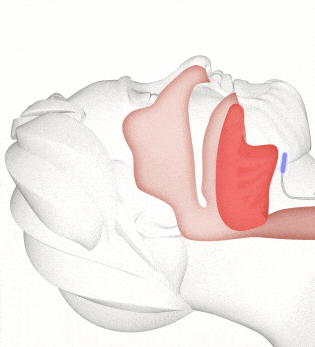What Is an Implantable Upper Airway Stimulation Device?
This small device helps people who have obstructive sleep apnea (OSA) — a condition where your airway gets blocked while you sleep. If you’ve tried using a CPAP machine but found it uncomfortable or hard to use, this device may be a better option.
Instead of wearing a mask, you control your sleep apnea with a small remote and mobile app. It is designed to fit into your life more easily and helps you breathe better at night.
How It Works
When you sleep, your tongue can relax and fall back, blocking your airway. This device sits inside your body and gently moves your tongue forward each time you breathe in, keeping your airway open.
Here’s what it does:
- Senses your breathing
- Sends a gentle signal to keep your airway open
- Helps you breathe regularly and sleep better
- All you need to do is use the handheld remote to turn it on before bed

Is This Device Right for You?
You may be a candidate if:
- You are 18 or older
- You have moderate to severe sleep apnea
- You have tried CPAP, but it didn’t work well for you
What’s Involved?
- A small implant that works while you sleep
- A remote to turn the device on and off
- A mobile app to track your sleep and share info with your doctor.
What to Know Before You Start
This device isn’t for everyone. It’s designed for people who:
- Have sleep apnea
- Have trouble using CPAP
- Want a long-term solution
Some risks of surgery include:
- Infection
- Tongue weakness (usually temporary)
- Changes in how the device feels (which can often be adjusted)
Ready to Take the First Step?
Talk to your primary care doctor about getting a referral to see one of our ear, nose, and throat (ENT) specialists. They’re trained to place the implantable upper airway stimulation device and can help you find out if it’s right for you.
Specialists Trained in Airway Implant Procedures
